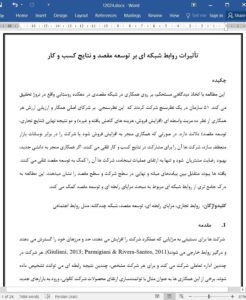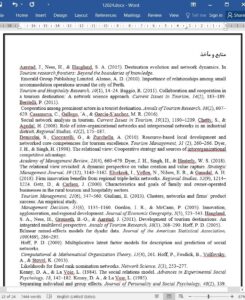Abstract
Taking a firm perspective, this study investigates cooperation in a destination network in a mountain village in Norway. 51 organizations participated in a survey, indicating their main cooperation partners and assessing the value of each cooperation in terms of ten intermediary benefits (increased sales, reduced costs, etc.) and two ultimate outcomes (business results, destination development). Firms perceived a cooperation to contribute to business results if the cooperation had led to increased sales or made the firm more resilient to market fluctuations. Firms perceived a cooperation to contribute to destination development if the cooperation had led to new knowledge, improved customer satisfaction, and hat not simply helped improve operations. The findings demonstrate the interconnectedness of intermediate and ultimate relationship outcomes on firm and destination level. The study contributes to a more comprehensive understanding of network relations, relevant to the literature on relational benefits and destination development.
1. Introduction
Firms expand their boundaries and engage in external relationships to achieve benefits that will increase firm performance (Giuliani, 2013; Parmigiani & Rivera-Santos, 2011). Each firm participates in several cooperative dyads, and for any given dyad, several relationship outcomes can be distinguished. Some of these contribute to increased revenues, for example by enabling the focal firm to develop new products, enter new markets or increase sales to existing customers. Others may help a firm reduce costs, for example by enabling it to negotiate shorter delivery times with suppliers and thereby reduce inventory. Both relationship outcome types can improve the bottom line of a business. These are standard topics in the management of supply chains and marketing channels and, in principle, no different in the case of tourism. However, if one adopts a local perspective and focuses on the businesses at a particular tourism destination, network effects and interdependencies between relationship outcomes become a central issue (Sainaghi & Baggio, 2017; Pavlovich, 2003; Scott, Cooper, & Baggio, 2008; Tinsley & Lynch, 2001).











